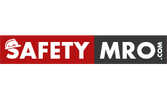RESPIRATORY PROTECTION

In numerous workplaces across the United States, millions of workers are required to wear respirators. Respirators safeguard laborers against inadequate oxygen conditions, unsafe cleans, hazes, smokes, fogs, gases, fumes, and splashes. Cancer, impairment of the lungs, diseases, and death may result from these threats. Keeping up with the OSHA Respiratory Protection Standard could prevent thousands of illnesses and hundreds of deaths each year.
The user of a respirator is protected in two primary ways. The first is to get rid of pollutants in the air. Particulate respirators, which remove airborne particles, and air-purifying respirators with cartridges or canisters, which remove gases and chemicals, are examples of this type of respirator. Different respirators safeguard by providing clean respirable air from another source. This category includes self-contained breathing apparatus (SCBA), which have their own air supply, and airline respirators, which use compressed air from a distant source. Read More(+)
